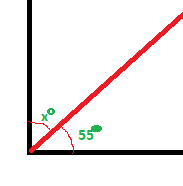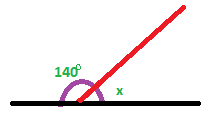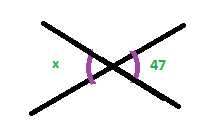Do you know about Angle types?
There are a lot of questions you will see that ask you to find the size of an angle, or to show that two angles are the same. To answer these questions you need to know your angle types
Answering these questions, you also have to give reasons, and in giving reasons you need the language for describing different patterns with angles, and different ways of how you can find the size of angles from other angles.
So over this weekend I’m going to post some of these rules, and the names you need to give while describing those rules…..
And I’ll be honest, I have to look some of them up! Not the rules themselves – I know all of them – but some of the names for them.
After these posts, I’ll give a couple of exam questions and show how to use the names of the rules in your explanations.
Let’s have a look at our first two angle types
Complementary angles
Angles that pay each other compliments! That’s nice. Well, not quite
The first thing is to remember that there are 90˚ in a right angle and 180˚ in a straight line. How can we use that information to find missing angles?

In all these three examples, we are looking to find the number of degrees in angle x.
In this case x and 55˚ make up a right angle, or 90˚ – so x = 35˚ due the ‘angles in a right angle’. And that is what you should write, to show that you have understood the reason for the answer.

In this example, x and 140˚ make up a straight line, which is 180˚.
So x = 40˚ due to ‘angles along a straight line’. Again, that is what you should write.
Opposite Angles

In this case, angles x and the one marked 47 are the same size. This is the law of opposite angles. You might be able to see that this is the angles on a straight line, applied twice, but remember the term ‘opposite angles’ and there no need to work out the other angles. We write
x = 47˚ , opposite angles.
In my next post I will add alternate angles and corresponding angles to the mix. Then we will be ready to tackle a lot of angle questions.
You can find more information about types of angles here
Angling for some fun continues here
One comment